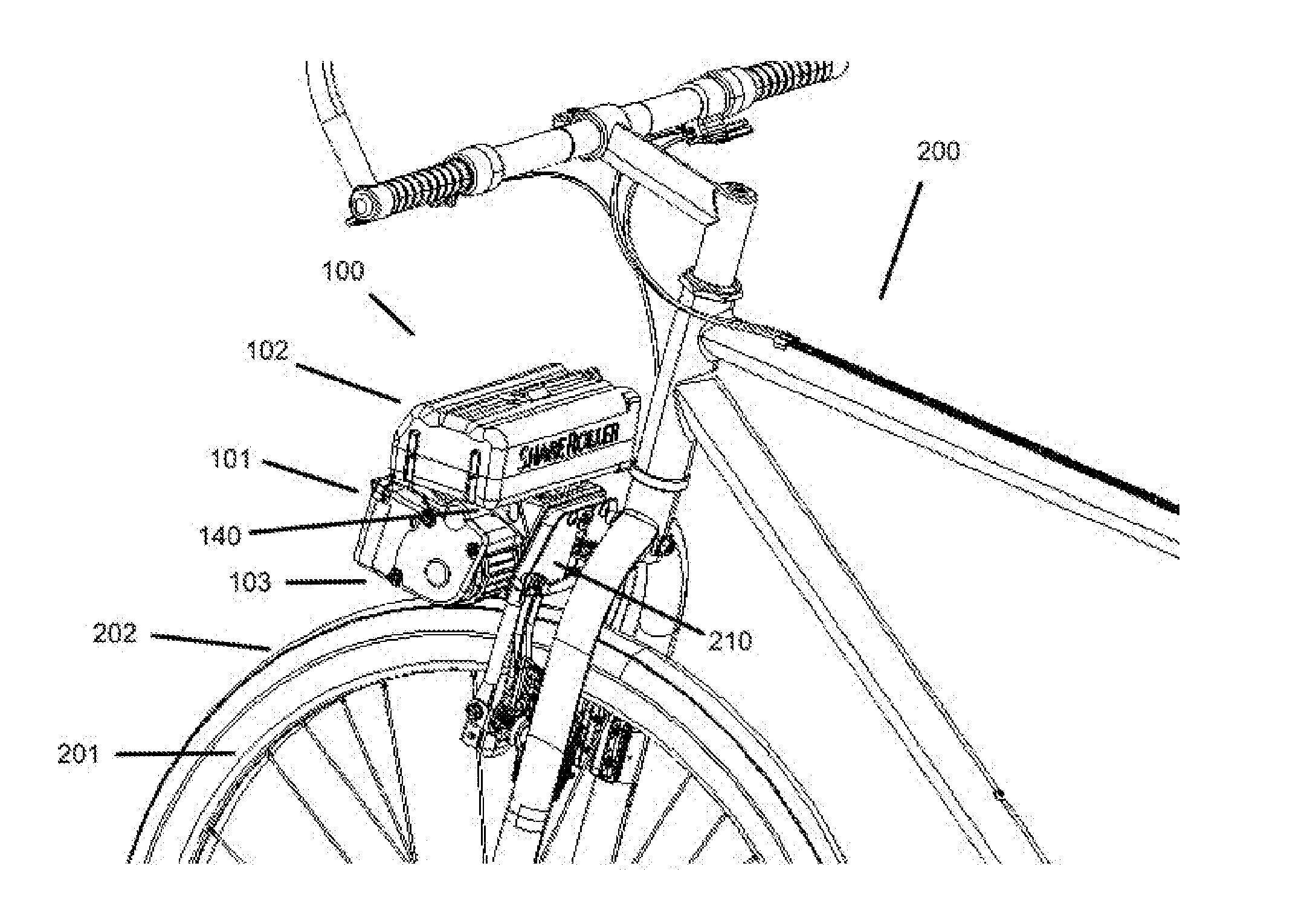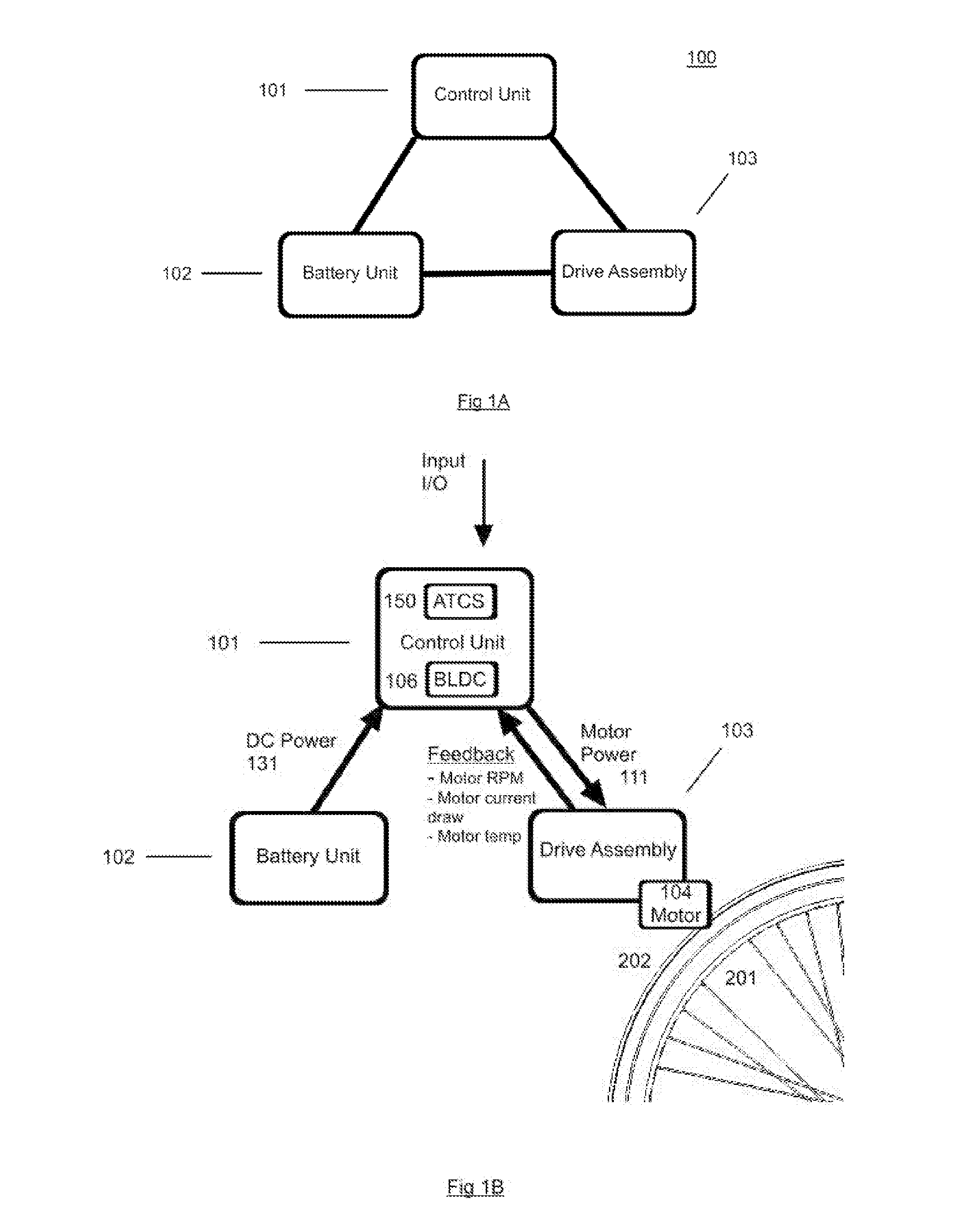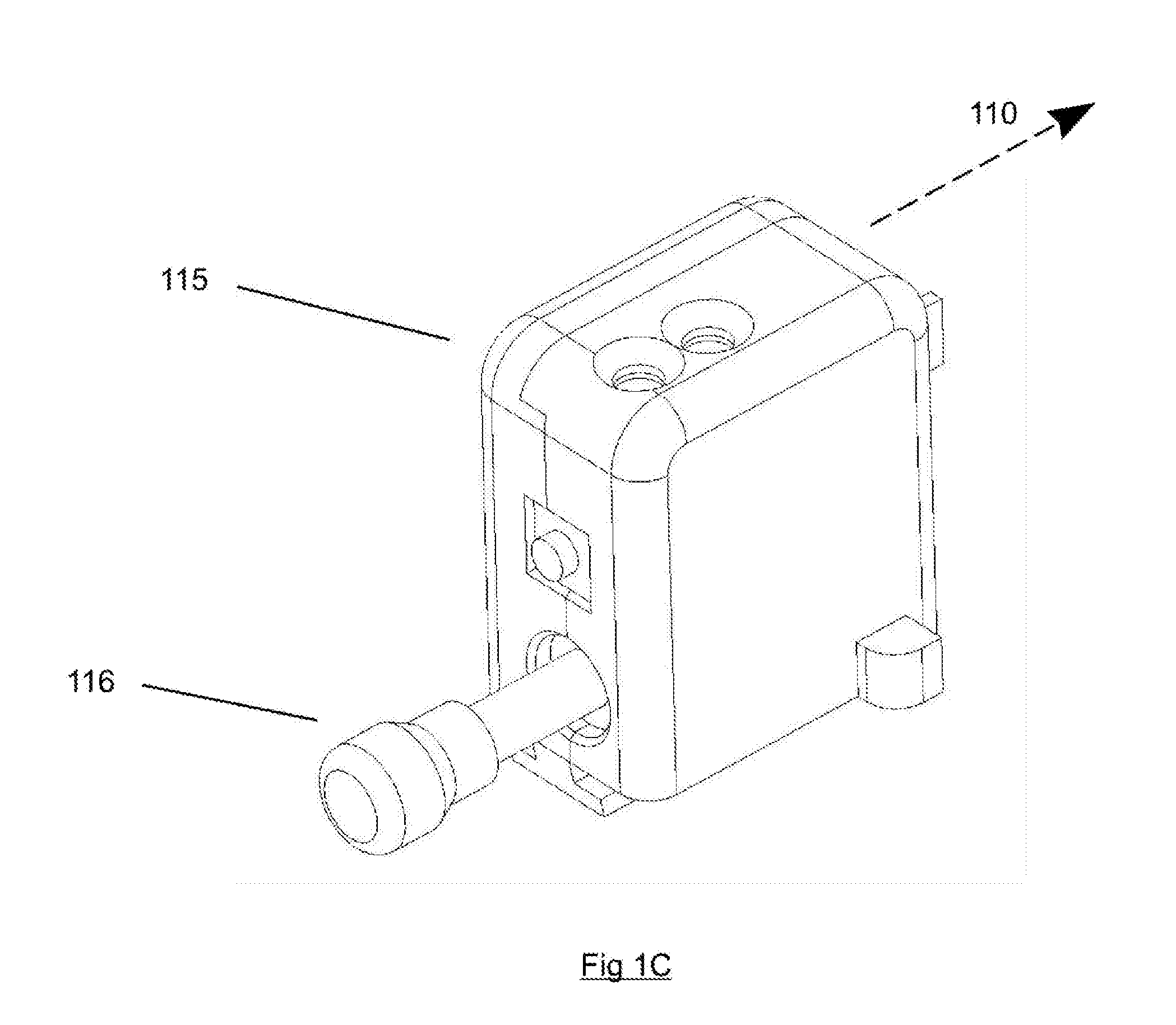Automatic traction control for friction drives
- Summary
- Abstract
- Description
- Claims
- Application Information
AI Technical Summary
Benefits of technology
Problems solved by technology
Method used
Image
Examples
Embodiment Construction
[0056]As shown in FIG. 1A, in embodiments of the disclosure, friction drive system 100 may include control unit 101, battery unit 102, and drive assembly 103. Battery unit 102 may provide electrical power to control unit 101 and / or to drive assembly 103. Control unit 101 may provide control information and / or commands to battery unit 102 and / or drive assembly 103. Drive assembly 103 may provide power to a tire or wheel of a wheeled vehicle, or it may provide power to a hub or crank assembly, or it may provide power to and / or portion of the wheeled vehicle. In various embodiments of the disclosure, control unit 101, battery unit 102, and drive assembly 103 may be provided as separate connecting units or as a single integrated unit. Friction drive system 100 also may be integrated with a wheeled vehicle, for example, as an electric bicycle or scooter.
[0057]As shown in the embodiment of FIG. 1B, drive assembly 103 may include motor 104 and, optionally, one or more rollers (not shown). ...
PUM
 Login to View More
Login to View More Abstract
Description
Claims
Application Information
 Login to View More
Login to View More - R&D
- Intellectual Property
- Life Sciences
- Materials
- Tech Scout
- Unparalleled Data Quality
- Higher Quality Content
- 60% Fewer Hallucinations
Browse by: Latest US Patents, China's latest patents, Technical Efficacy Thesaurus, Application Domain, Technology Topic, Popular Technical Reports.
© 2025 PatSnap. All rights reserved.Legal|Privacy policy|Modern Slavery Act Transparency Statement|Sitemap|About US| Contact US: help@patsnap.com



